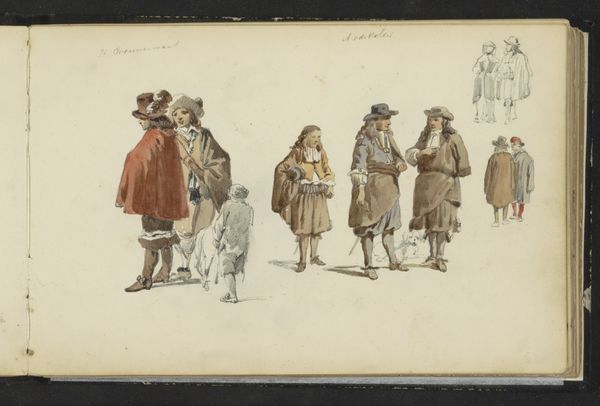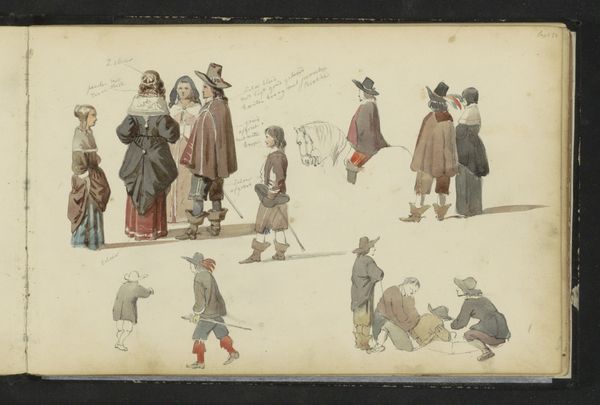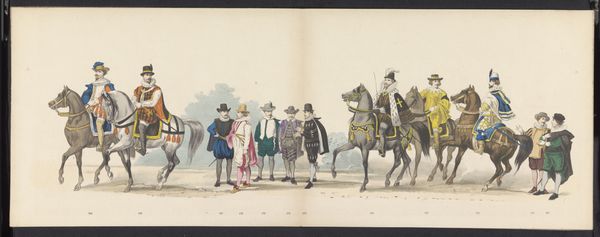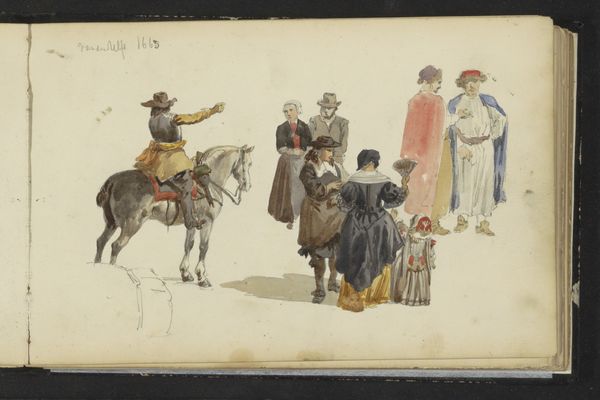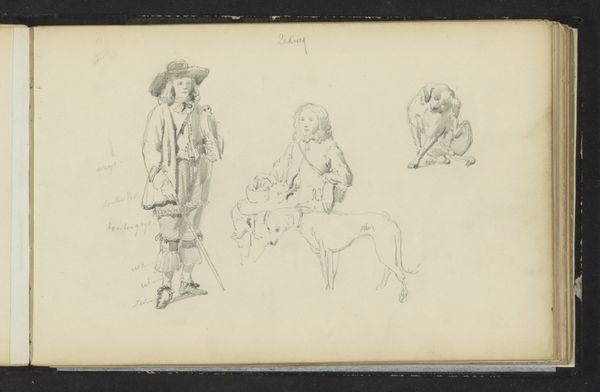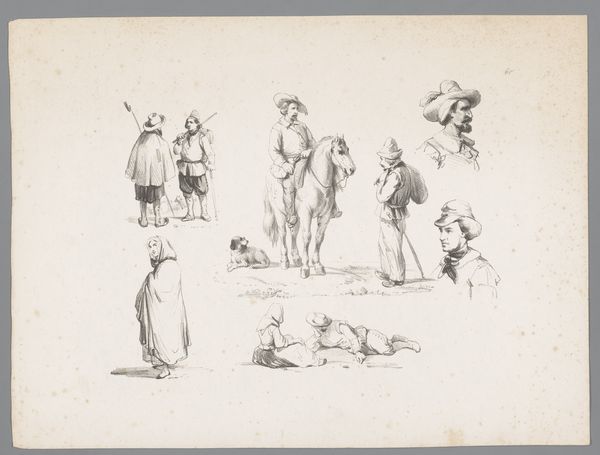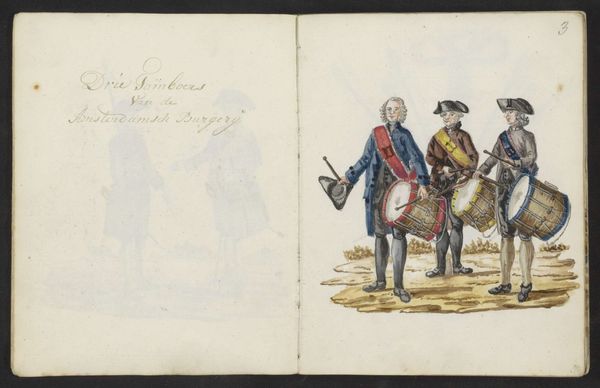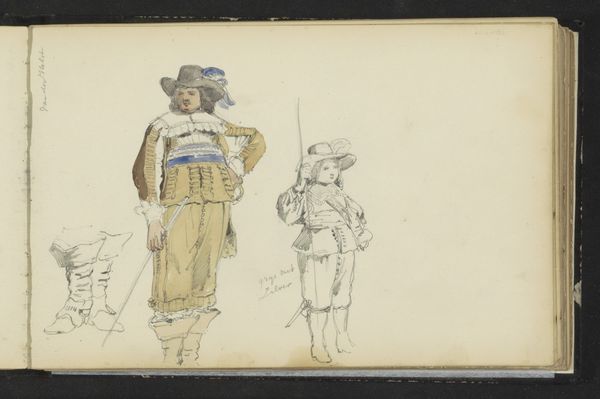
drawing, watercolor
#
portrait
#
drawing
#
imaginative character sketch
#
toned paper
#
sketch book
#
incomplete sketchy
#
landscape
#
figuration
#
personal sketchbook
#
watercolor
#
horse
#
sketchbook drawing
#
watercolour bleed
#
watercolour illustration
#
genre-painting
#
sketchbook art
#
watercolor
Copyright: Rijks Museum: Open Domain
Editor: So, this is Figuren in zeventiende-eeuwse kleding, or Figures in Seventeenth-Century Clothing, a watercolor and drawing by Cornelis Springer, made sometime between 1852 and 1859. It's like a page from a sketchbook, with various figures sketched onto toned paper. There’s a horseman in red and many people on foot...it almost looks like a street scene study. What do you see in this piece? Curator: What I find immediately striking is Springer's engagement with history, and how this work invites us to consider the construction of historical narratives. It's not merely a depiction of 17th-century clothing, but an engagement with how the 19th century viewed and interpreted the past. Editor: Oh, interesting! So, like a commentary on how historical periods are romanticized? Curator: Exactly! Notice the varying levels of detail in each figure. Some are mere outlines, while others are more fully rendered. It speaks to the selective ways we remember and construct history, isn't it? Who is remembered, who is detailed and prominent, and who fades into the background? Do you see any power dynamics being played out here, whether intended by the artist or not? Editor: I see what you mean. The guy on the horse is much more detailed than the beggar with the cane. Maybe it reflects the social hierarchy of the 17th century, as viewed through a 19th-century lens? Curator: Precisely. And Springer's choice of medium - watercolor, a more delicate and ephemeral technique - further emphasizes the fragility and constructed nature of historical representation. It's like he's showing us the act of remembering and imagining a past era. Editor: I hadn't thought of it that way! It's more than just a historical snapshot; it's a commentary on historical storytelling. Curator: Indeed. And considering Springer was working during a period of intense nationalism, it begs the question: how does art shape our understanding of national identity through selective engagement with the past? Editor: I'll definitely be looking at historical paintings differently now, thanks for sharing that.
Comments
No comments
Be the first to comment and join the conversation on the ultimate creative platform.
